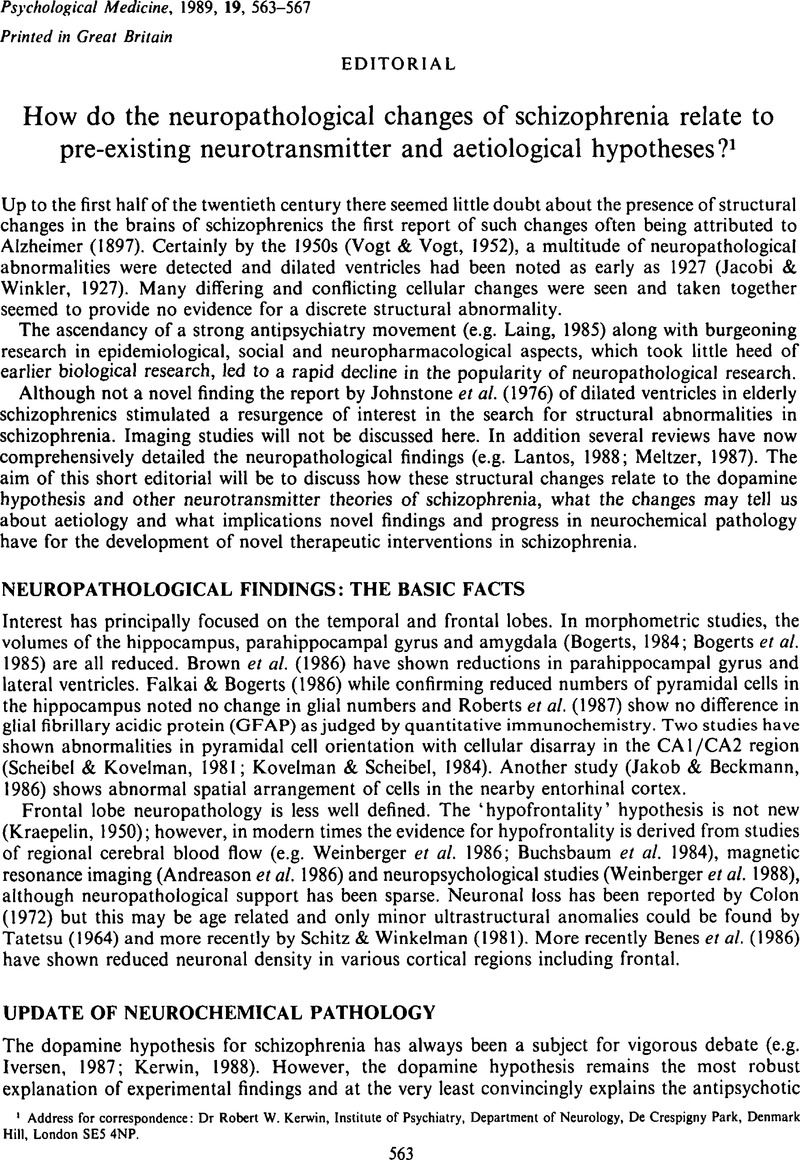Crossref Citations
This article has been cited by the following publications. This list is generated based on data provided by Crossref.
Kerwin, Robert W.
and
Beats, Barbara C.
1990.
Increased forskolin binding in the left parahippocampal gyrus and CA1 region in post mortem schizophrenic brain determined by quantitative autoradiography.
Neuroscience Letters,
Vol. 118,
Issue. 2,
p.
164.
1990.
POSTER COMMUNICATIONS.
British Journal of Pharmacology,
Vol. 99,
Issue. S1,
Kerwin, R.
Patel, S.
and
Meldrum, B.
1990.
Quantitative autoradiographic analysis of glutamate binding sites in the hippocampal formation in normal and schizophrenic brain post mortem.
Neuroscience,
Vol. 39,
Issue. 1,
p.
25.
1990.
Communications.
British Journal of Pharmacology,
Vol. 99,
Issue. S1,
Okada, F.
Crow, T. J.
and
Roberts, G. W.
1991.
G proteins (Gi, Go) in the medial temporal lobe in schizophrenia: preliminary report of a neurochemical correlate of structural change.
Journal of Neural Transmission,
Vol. 84,
Issue. 1-2,
p.
147.
1991.
ORAL COMMUNICATIONS.
British Journal of Pharmacology,
Vol. 102,
Issue. S1,
Eagles, John M.
1991.
The Relationship Between Schizophrenia and Immigration are There Alternatives to Psychosocial Hypotheses?.
British Journal of Psychiatry,
Vol. 159,
Issue. 6,
p.
783.
Bakan, Rita
Birmingham, C. Laird
and
Goldner, Elliot M.
1991.
Chronicity in anorexia nervosa: Pregnancy and birth complications as risk factors.
International Journal of Eating Disorders,
Vol. 10,
Issue. 6,
p.
631.
Pangalos, M. N.
Malizia, A. L.
Francis, P. T.
Lowe, S. L.
Bertolucci, P. H. F.
Procter, A. W.
Bridges, P. K.
Bartlett, J. R.
and
Bowen, D. M.
1992.
Effect of Psychotropic Drugs on Excitatory Amino Acids in Patients Undergoing Psychosurgery for Depression.
British Journal of Psychiatry,
Vol. 160,
Issue. 5,
p.
638.
Zerbin-Rüdin, E.
1992.
Integrative Biological Psychiatry.
p.
71.
Nasrallah, Henry A.
1993.
Neurodevelopmental Pathogenesis of Schizophrenia.
Psychiatric Clinics of North America,
Vol. 16,
Issue. 2,
p.
269.
Waddington, John L.
1993.
Antipsychotic Drugs and their Side-Effects.
p.
65.
Busatto, Geraldo F.
and
Kerwin, Robert W.
1997.
SCHIZOPHRENIA, PSYCHOSIS, AND THE BASAL GANGLIA.
Psychiatric Clinics of North America,
Vol. 20,
Issue. 4,
p.
897.





